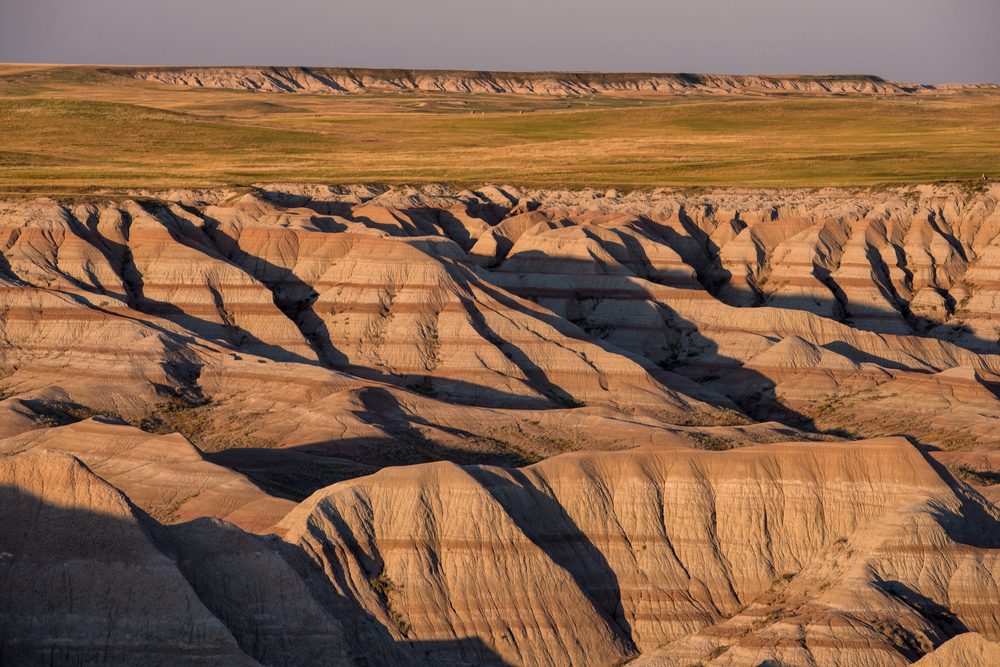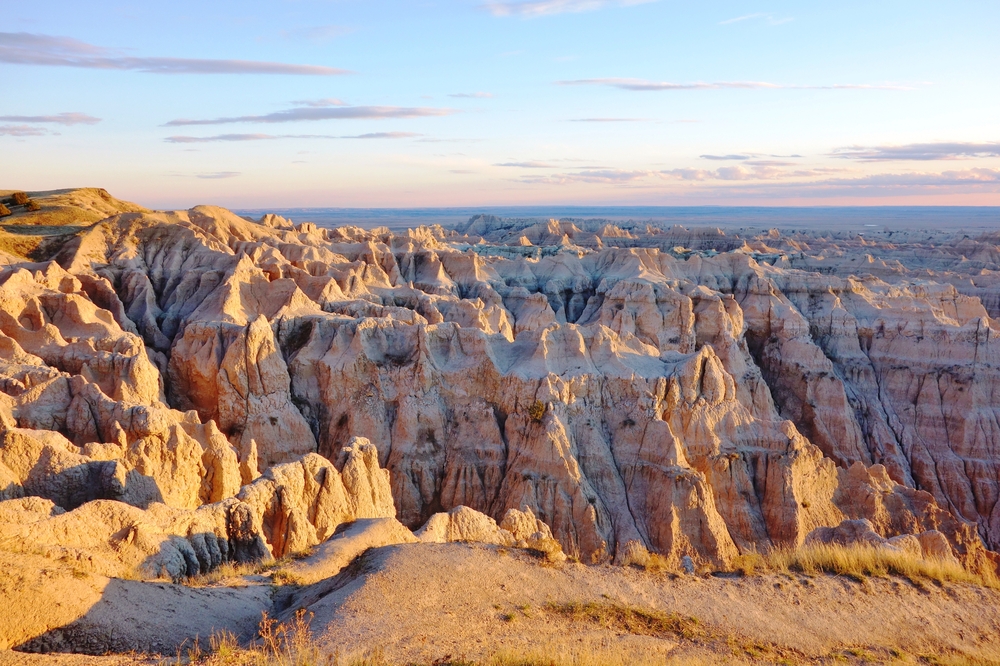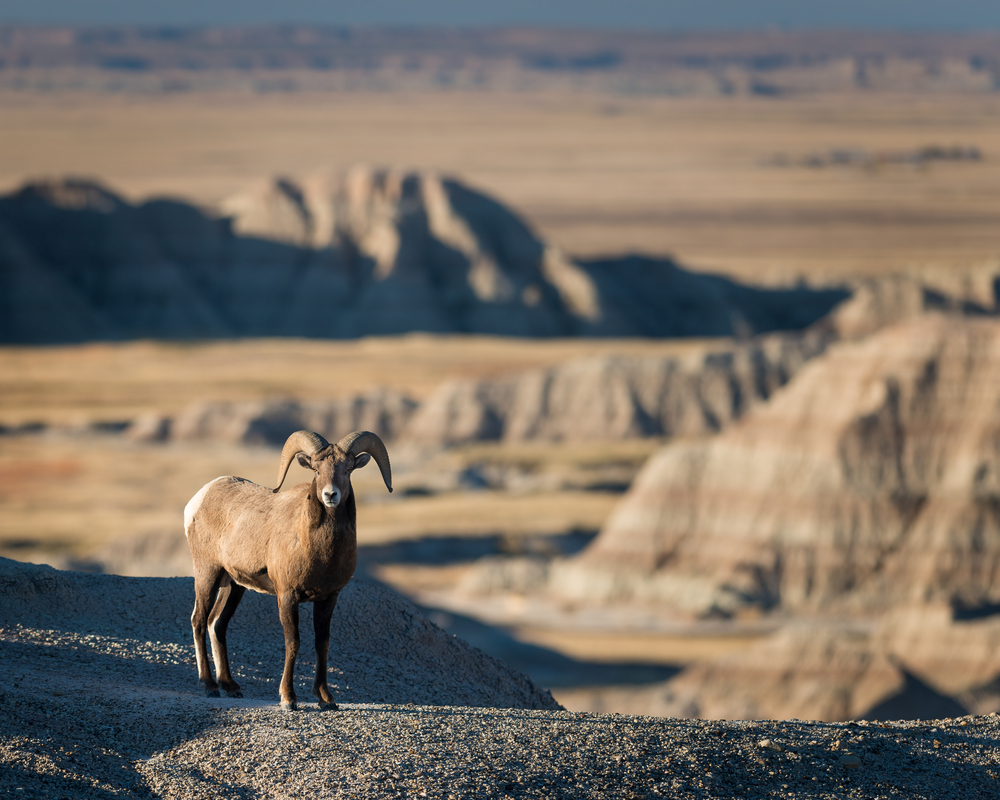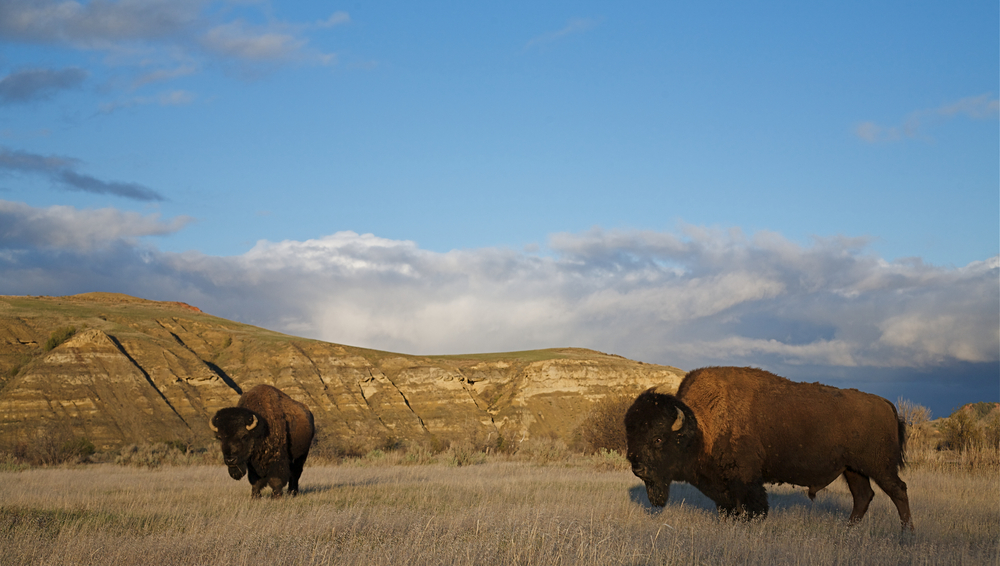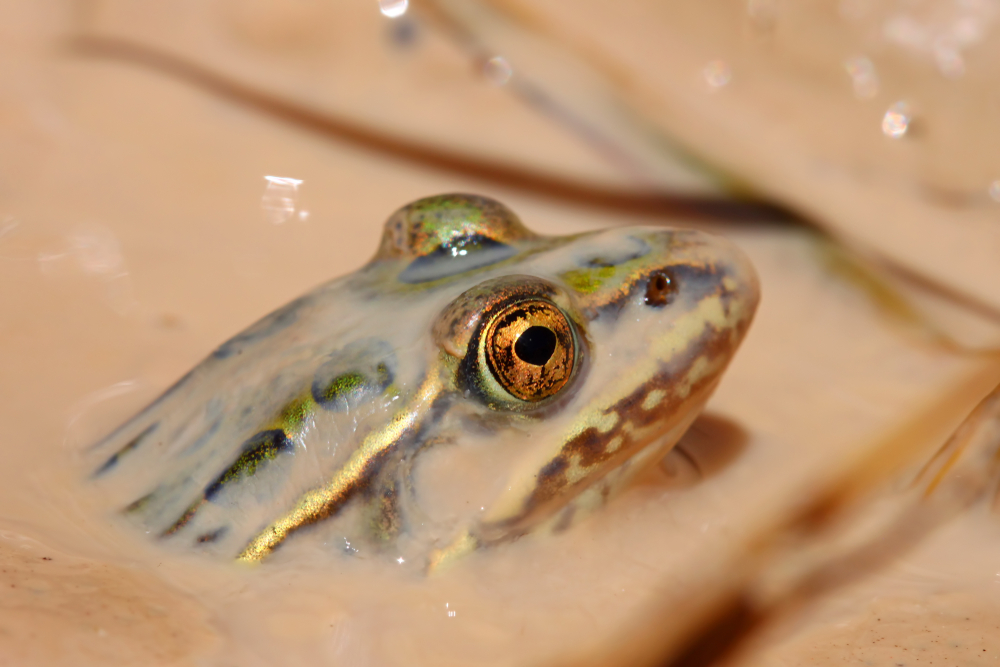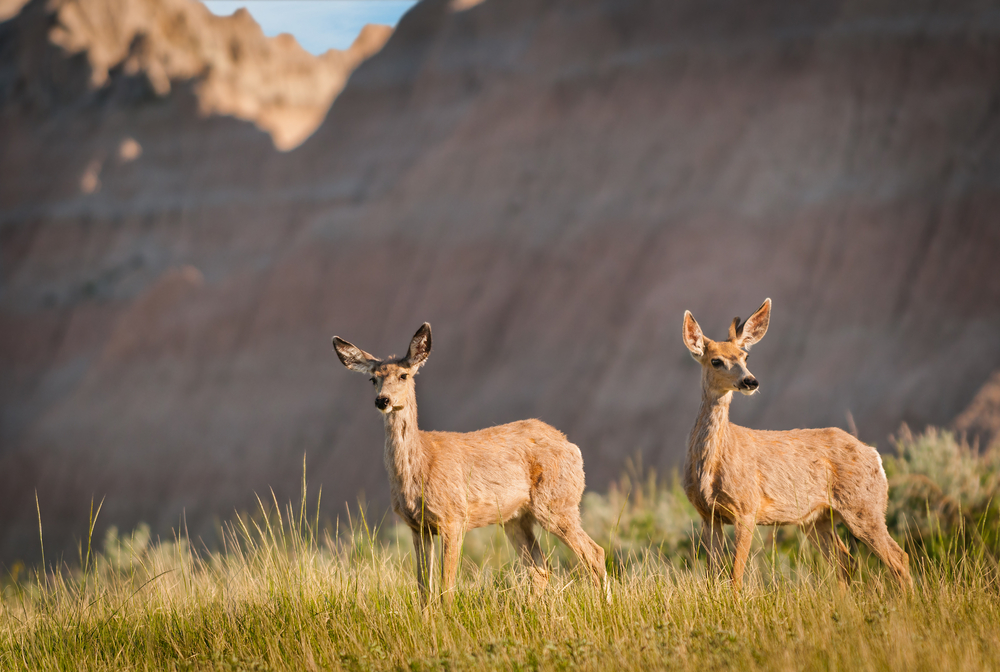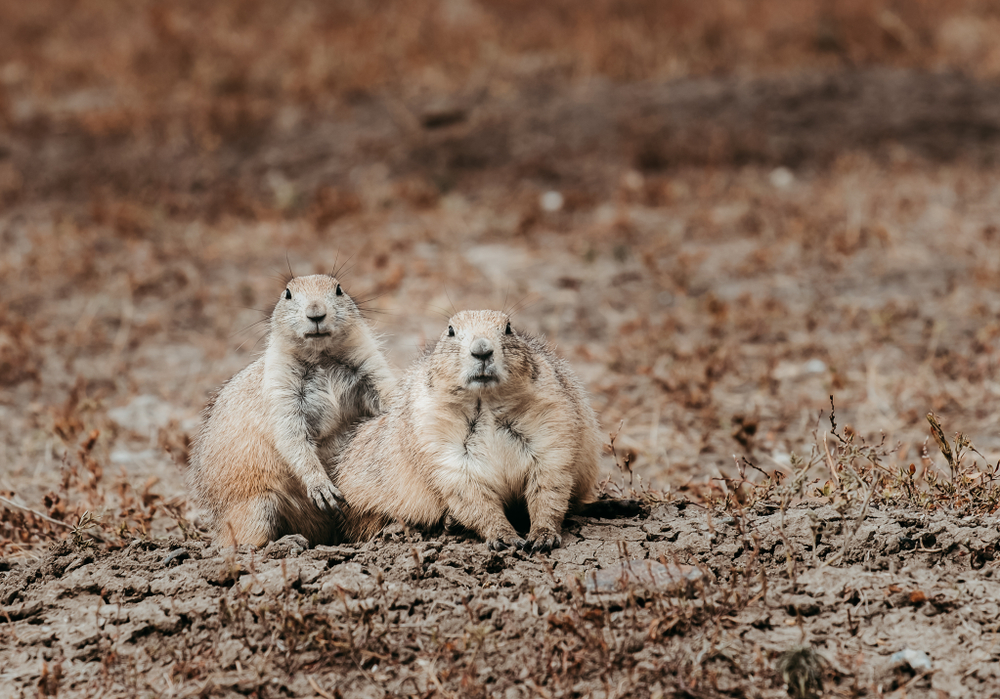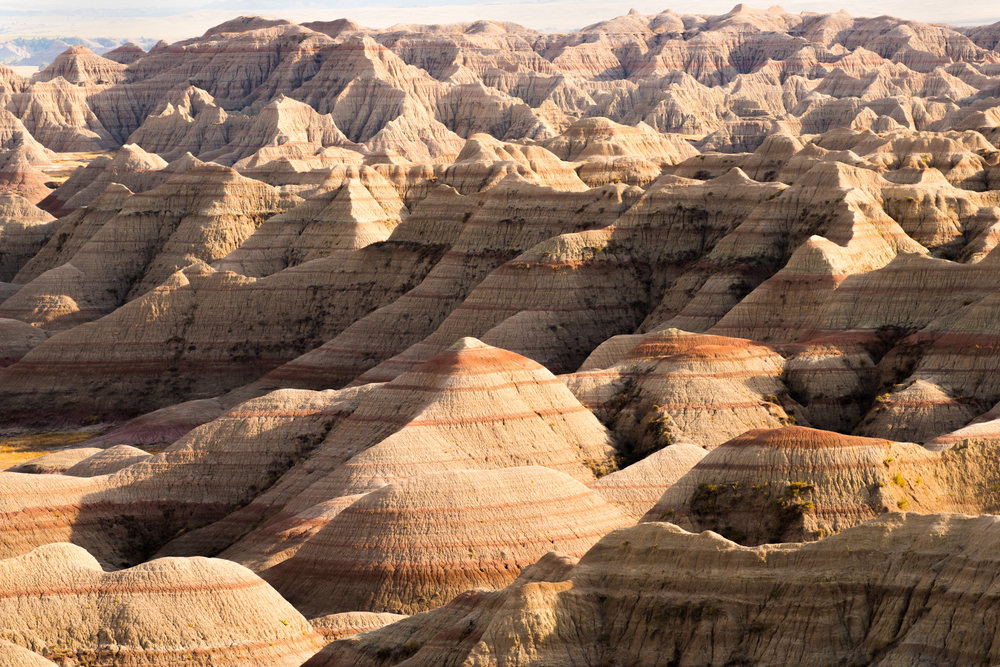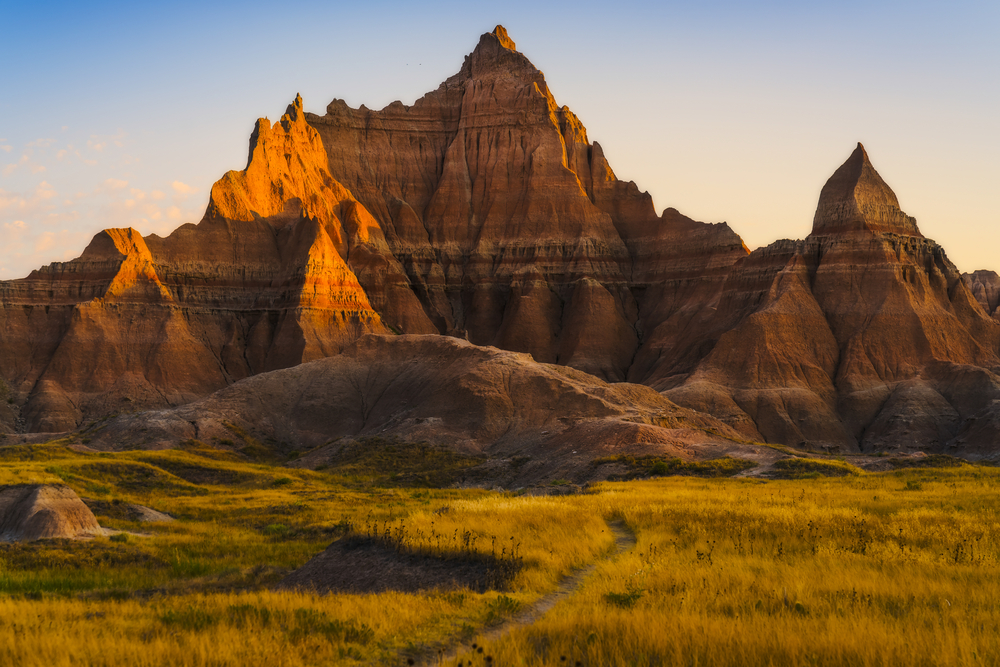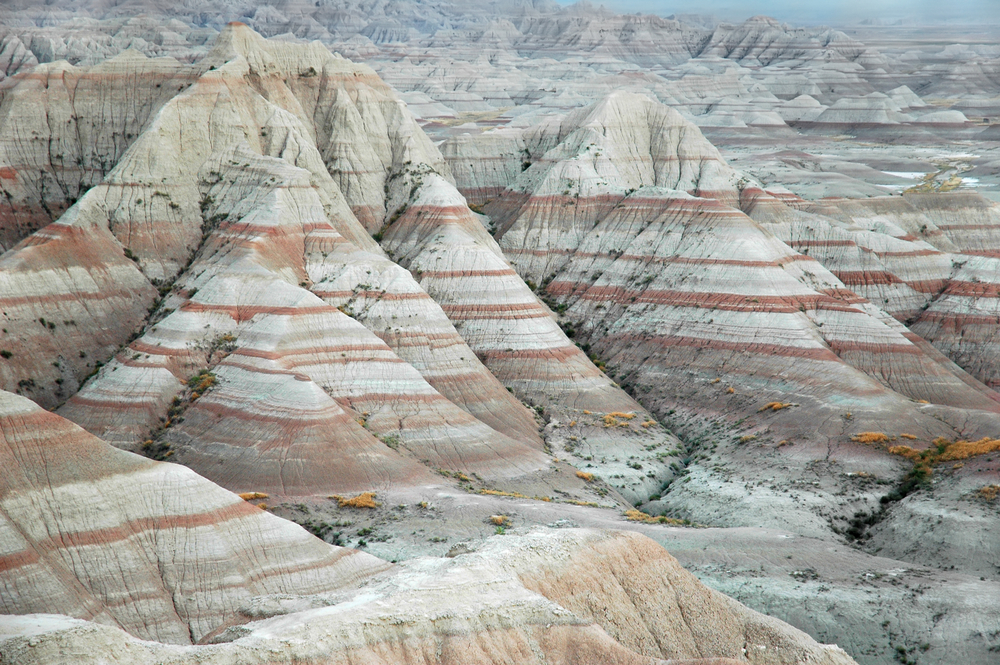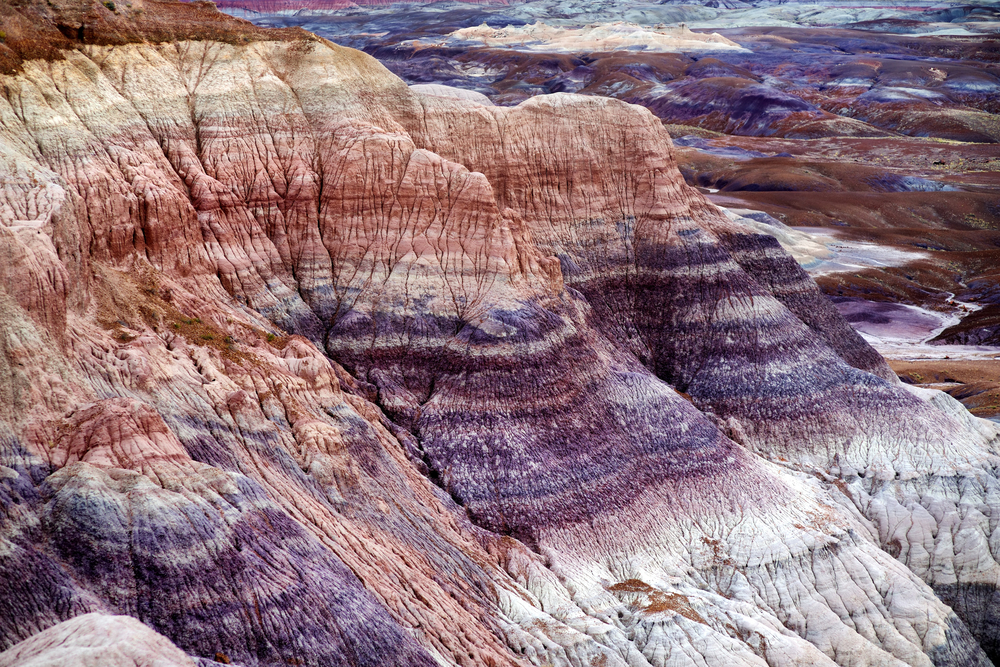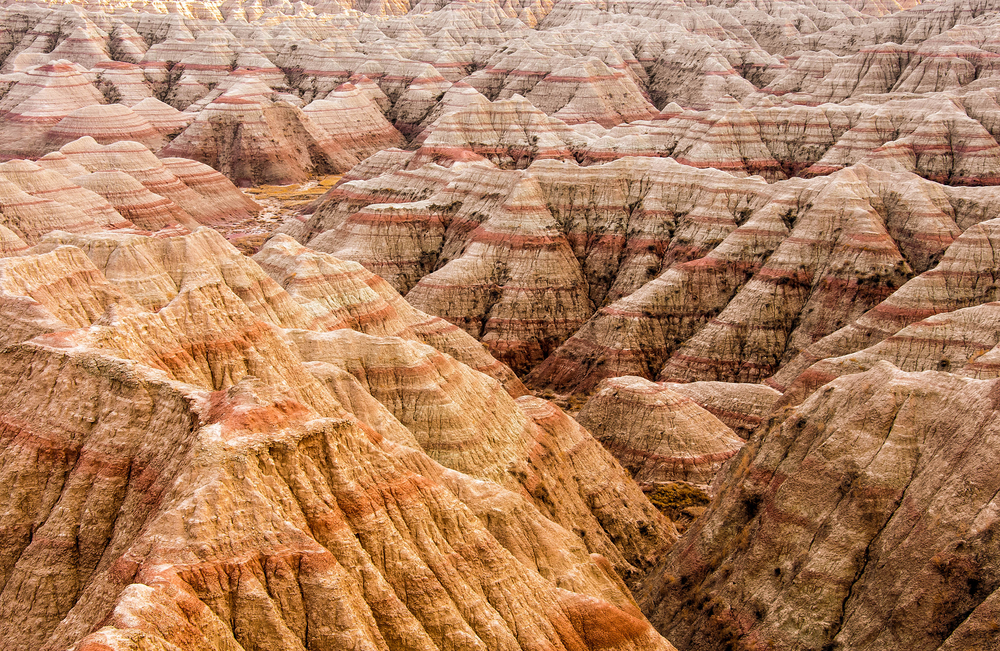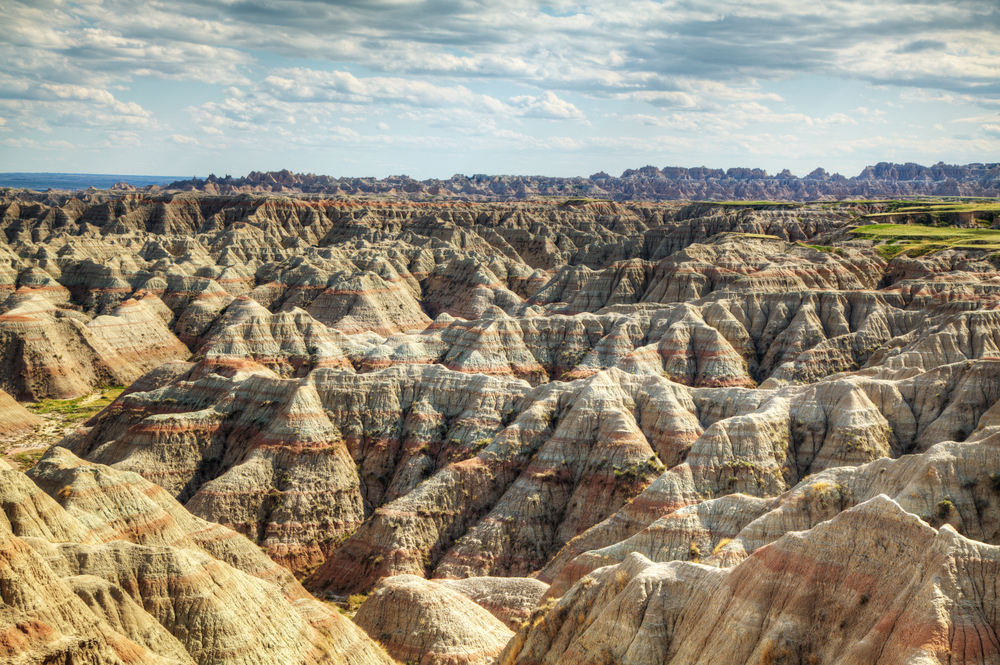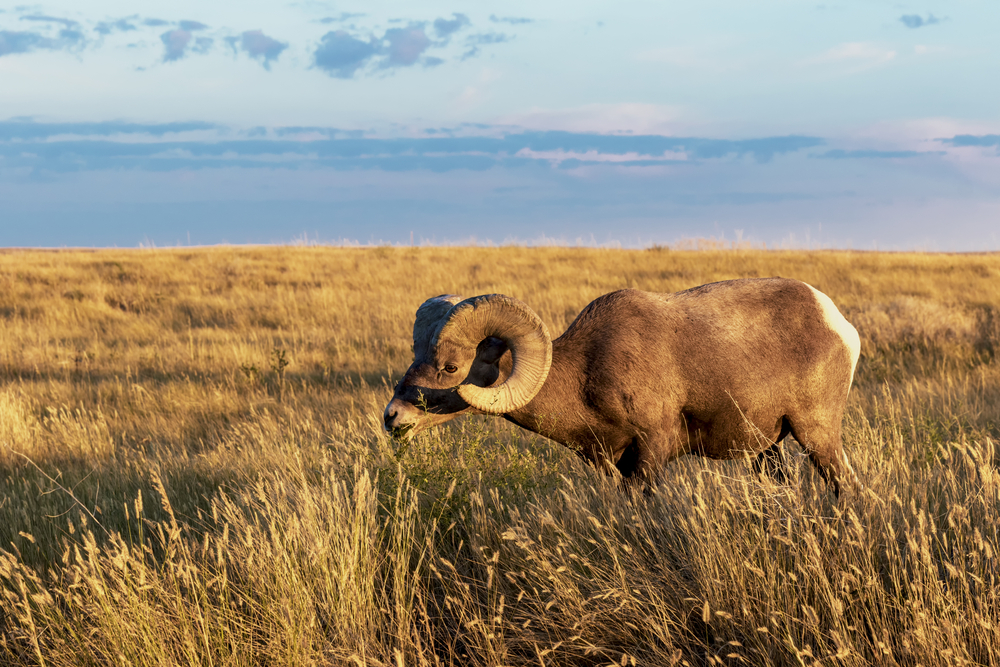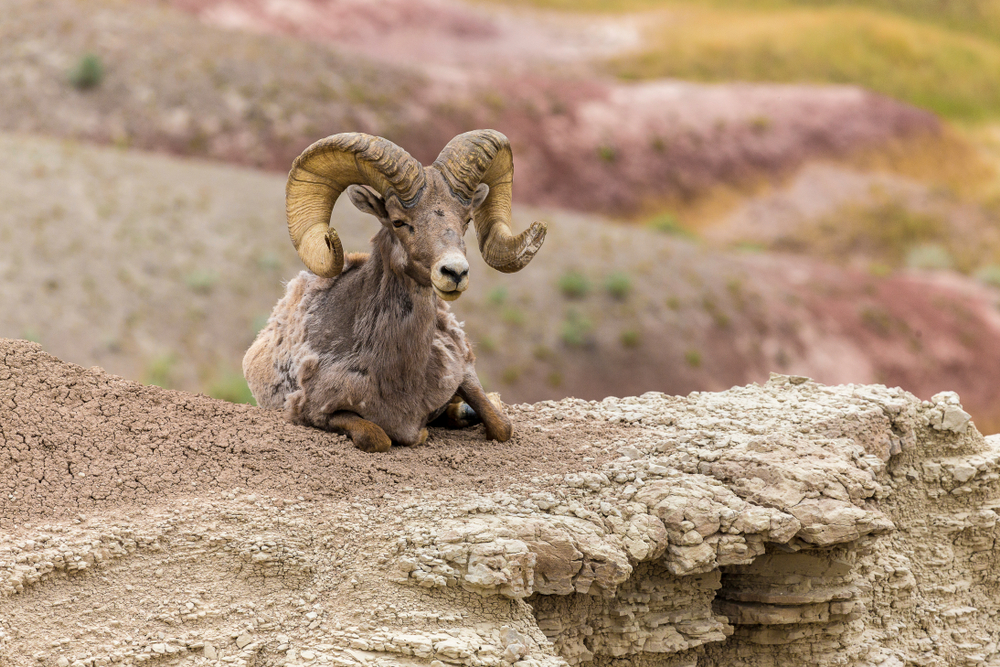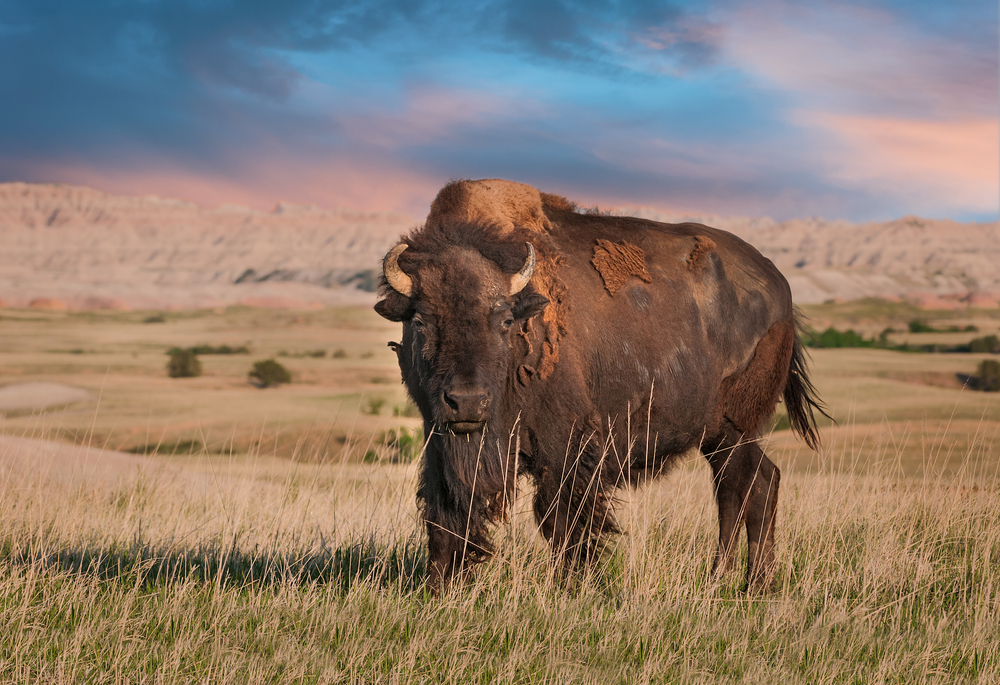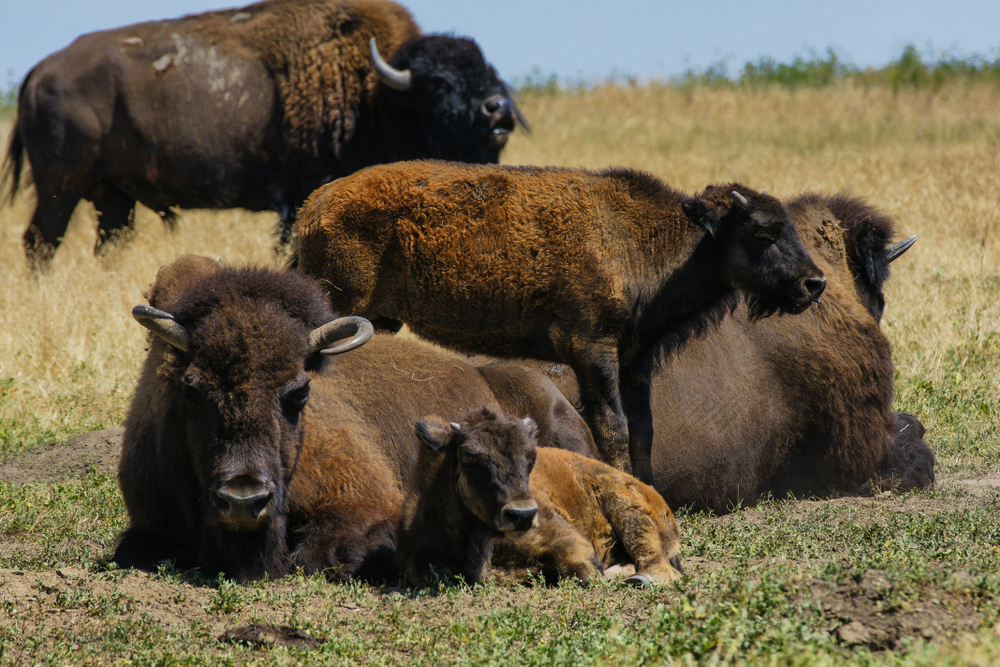Badlands Overview
Badlands National Park, situated in southwestern South Dakota, USA, is a striking landscape of rugged beauty and geological wonders. Spanning an area of approximately 982 square kilometers (about 379 square miles), the park was established in 1978, evolving from a national monument designated in 1939. It is renowned for its unique badlands formations – sharply eroded buttes, pinnacles, and spires, alongside the largest undisturbed mixed grass prairie in the United States. This dramatic landscape is the result of millions of years of sediment deposition, erosion, and volcanic activity, creating a stunning visual display that changes in color and form with the shifting light of day.
The park is divided into two main units, the North Unit and the South Unit, with the latter co-managed with the Oglala Lakota tribe and containing the Stronghold District, an area of significant cultural importance. The Badlands hold a rich fossil record, offering a window into the ancient past with remains of prehistoric horses, rhinos, and saber-toothed cats that once roamed this land.
Badlands National Park is not just about its otherworldly terrain; it also supports a diverse array of wildlife, including bison, bighorn sheep, prairie dogs, and the highly endangered black-footed ferret, which has been reintroduced to the area. The park’s mixed grass prairie ecosystem is a complex habitat that sustains over 400 species of plants, providing food and shelter for the wildlife.
Visitors to Badlands National Park can explore its vast landscapes through a network of hiking trails, scenic drives, and designated overlooks. The park offers educational programs, guided tours, and night-sky viewing events, taking advantage of one of the darkest skies in the country for stargazing.
Badlands National Park is a place of profound natural beauty and scientific significance, inviting exploration and contemplation of its ancient landscapes, diverse wildlife, and the dynamic processes that shape our planet.
Park Map
Badlands National Park Highlights
Engaging the Badlands
Badlands National Park Trails
Sources
- Britannica, Badlands National Park, https://www.britannica.com/place/Badlands-National-Park, retrieved April 2024.
- National Park Foundation, Nature’s Surreal Masterpiece, https://www.nationalparks.org/explore-parks/badlands-national-park, retrieved April 2024.
- National Park Service, Badlands National Park, https://www.nps.gov/badl/index.htm, retrieved April 2024.
- South Dakota State Parks, Badlands National Park, https://www.stateparks.com/badlands_national_park_in_south_dakota.html, retrieved April 2024.
- Travel South Dakota, Badlands National Park, https://www.travelsouthdakota.com/explore-with-us/great-8/badlands, retrieved April 2024.








































































